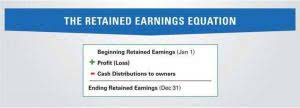
For example, if an asset account which is expected to have a debit balance, shows a credit balance, then this is considered to be an abnormal balance. Now that we have explored the relationship between normal balances and assets, liabilities, and equity, let’s move on to discussing the importance of normal balances in accounting. Next, let’s explore the relationship between normal balances and the categories of assets, liabilities, and equity in accounting. When it comes to the world of accounting, maintaining balance is of utmost importance. Every transaction has a corresponding impact on financial statements, and it is crucial to identify the appropriate categories to record these impacts accurately.

On which side do assets, liabilities, equity, revenues and expenses have normal balances?

Accountants and bookkeepers often use T-accounts as a visual aid to see the effect of a transaction or journal entry on the two (or more) accounts involved. After you have identified the two or more accounts involved in a business transaction, you must debit at least one account and credit at least one account. If a company pays the rent for the current month, Rent Expense and Cash are the two accounts normal balance of expenses involved. If a company provides a service and gives the client 30 days in which to pay, the company’s Service Revenues account and Accounts Receivable are affected. He has $30,000 sitting in inventory and buys another 5 computers worth $10,000.

Prepaid Expense: Definition and Example
- For instance, while expenses have a normal debit balance, it is not expected that these accounts will always have a debit balance at the end of a period.
- As we wrap up our chat on accounting, it’s key to remember that knowing about normal balances is crucial.
- We can illustrate each account type and its corresponding debit and credit effects in the form of an expanded accounting equation.
- It keeps the company’s financials accurate and makes sure the balance sheet is correct.
- For example, you can usually find revenues and gains on the credit side of the ledger.
A company often attempts to book as many actual invoices as it can during an accounting period before closing its accounts payable (AP) ledger. Then, supporting accounting staff analyze what transactions/invoices might not have been recorded by the AP team and book accrued expenses. Prepaid expenses are payments made in advance for goods and services that are expected to be provided or used in the future. While accrued expenses represent liabilities, prepaid expenses are recognized as assets on the balance sheet. This is because the company is expected to receive future economic benefit from the prepayment. Although the accrual method of accounting is labor-intensive because it requires extensive journaling, it is a more accurate measure of a company’s transactions and events for each period.
What Constitutes a Normal Debit Balance for Expense Accounts?
(Purchases of equipment or supplies are not recorded in the purchases account.) This account reports the gross amount of purchases of merchandise. Net purchases is the amount of purchases minus purchases returns, purchases allowances, and purchases discounts. A related account is Supplies Expense, which appears on the income statement. The amount in the Supplies Expense AI in Accounting account reports the amounts of supplies that were used during the time interval indicated in the heading of the income statement.
- These accounts normally have credit balances that are increased with a credit entry.
- Additionally, the normal balance affects financial ratios derived from the financial statements.
- The normal balance of a contra account (discussed later in this article) is always opposite to the main account to which the particular contra account relates.
- Each account type (Assets, Liabilities, Equity, Revenue, Expenses) is assigned a Normal Balance based on where it falls in the Accounting Equation.
- Thousands of people have transformed the way they plan their business through our ground-breaking financial forecasting software.
Understanding this difference is crucial for all financial analysis. A liability account that reports amounts received in advance of providing goods or services. When the goods or services are provided, this account balance is decreased and a revenue account is increased. Included are the income statement accounts (revenues, expenses, gains, losses), summary accounts (such as income summary), and a sole proprietor’s drawing account. Salaries Expense will usually be an operating expense (as opposed to a nonoperating expense). Depending on the function performed by the salaried employee, Salaries Expense could be classified as an administrative expense or as a selling expense.
- This can be developed into the expanded accounting equation as follows.
- Other times, it’s simply required—a landlord might want the first and last month’s rent before handing over the keys.
- When an expense is incurred, the debit entry is recorded on the left side of the T-account and the credit entry is recorded on the right side.
- Normal balances are crucial for the actual cash flows for accrual-based revenues and expenses.
- Debits and credits shape our financial standings in reports like the balance sheet and income statement.
So when an accrued expense is paid, the Liability account is debited (its normal balance side), and Cash is credited (its debit-normal balance is reduced). This illustrates how normal balances substantiate effective cash flow management and forecasting. Another misconception is that normal balances are the expected ending balances for accounts. In reality, normal unearned revenue balances indicate the side of the ledger that increases the account.
- Normal balance shows how transactions flow through different accounts.
- The normal balance is the expected balance each account type maintains, which is the side that increases.
- T-accounts help accountants see how debits and credits affect an account.
- If, on Dec. 31, the company’s income statement recognizes only the salary payments that have been made, the accrued expenses from the employees’ services for December will be omitted.
- Let’s look at three transactions and consider the related journal entries from both the bank’s perspective and the company’s perspective.
- And finally, asset accounts will typically have a positive balance, since these represent the company’s valuable resources.
And finally, asset accounts will typically have a positive balance, since these represent the company’s valuable resources. A cash account is an expected normal balance account that includes cash and cash equivalents. For example, if a company wanted to increase its inventory (an asset), it would make a journal entry to debit inventory and credit cash (another asset).

Assume he bought the computers with cash and his starting cash account had $25,000 in it. This can be developed into the expanded accounting equation as follows. Normal balance of an account refers to the side on which an increase in that account is recorded.
